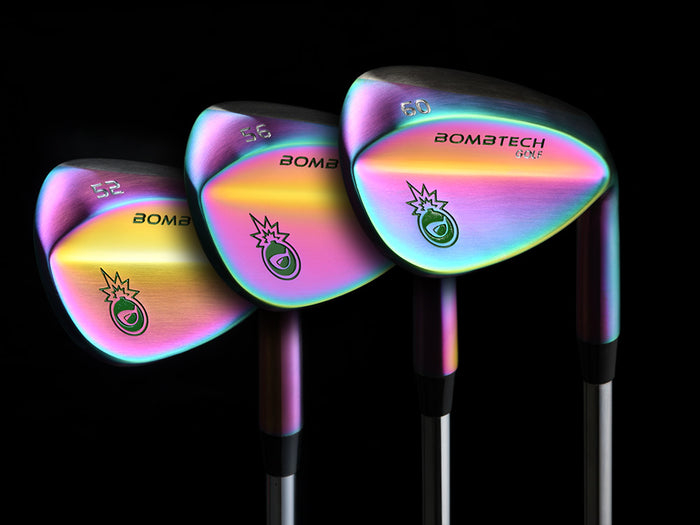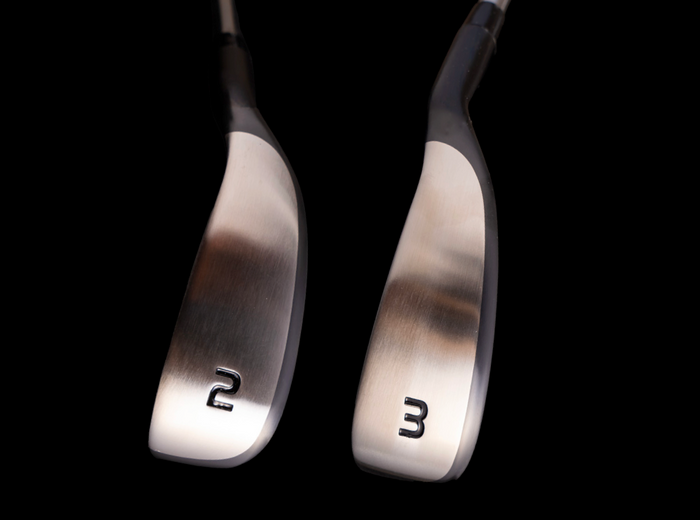With the constant innovation and development of new golf equipment over the years, golf players get to choose from a vast array of options. Whether you’re looking for a premium golf wedge set to boost your game or wish to find the best irons for intermediate golfers, you should familiarize yourself with all the different options available to you and choose the golf clubs that match your style.
In this article, we discuss differences between golf wedges, the wedge setups used by professionals, and tell you how you can find which wedge options aren’t allowed in competitions. Keep on reading to learn all about wedges and how you can use them to improve your game.
What is the difference between golf wedges?
Understanding the differences between different wedge types can be challenging, particularly if you’re new to golf. This is because there are four main wedge types with key differentiating characteristics. The four wedge types include pitching, lob, sand, and gap wedges, each having a different loft degree.
The degree of loft is a crucial factor for determining the ball’s trajectory - the higher the loft degree, the faster the ball will fly into the air. Here’s what you should use each wedge type for:
Is a gap wedge the same as an approach wedge?
To cut a long story short, a gap wedge is also called an approach wedge by some golfers and manufacturers. This is just a matter of semantics. The two wedges are essentially the same, and it might be easier to refer to this kind of wedge based on its loft degree instead of the name, particularly because there seems to be some confusion regarding this topic.
What wedges do pros use?
We can never overstate the importance of good wedge play. However, many novice golfers seem to struggle with deciding on the right wedge setup for them. In order to pick the right loft for your wedge, you should look at your pitching wedge loft and then pick the wedge with the highest loft that you are comfortable with.
When it comes to professional wedge setups, there are generally three main options:
Two-wedge setups
Many golfers use the clockface drill principles to dial in their distances as it enables them to get more shots with a single club. If you choose to ditch a wedge and get a fairway hybrid or wood, we recommend using a 48 degree pitching wedge, and a 56 degree sand wedge.
Three-wedge setups
This is the system most golfers tend to use, especially when they still can’t get the distances that professionals can achieve. This is a good setup which leaves you sufficient room for 1-2 fairway woods. For instance, you can get a 46 degree pitching wedge, a 52 degree gap wedge, and a 58 degree lob wedge to get even gaps of 6 degrees between each club.
Four-wedge setups
If you are a long hitter that manages to hit the ball further than the 208 yard mark off the tee consistently, a four-wedge setup may be the best choice. It allows you to reproduce yardage gaps with stock swings, as well as offers additional bounce options that may help you with varied sand/turf or awkward lies.
What wedges are illegal in golf?
If you want to learn which wedges have been deemed non-conforming to the Rules of Golf by the R&A and the USGA, all you have to do is search the Informational Club Database and put in the information specific to your wedge. This includes the name of the manufacturer, the name of the product, and any specific wedge markings.
Naturally, you can always use non-conforming golf wedges if you are a recreational golfer who wants to have fun with friends. There’s nothing like using a performance-enhancing wedge to achieve incredible spin, and no one will blame you for it unless you are competing professionally.
Where do I find top-quality premium golf wedges?
Right here at BombTech. We offer some of the finest golf wedges available on the market right now, and would love to help you improve your distances too. Make sure to check out our selection and enjoy our uniquely designed and carefully crafted wedges, irons, and drivers that can transform your game. What’s more, you’ll also get to enjoy our money-back guarantee and highly secure payment system. Get your wedges today!






This article has been very helpful in explaining the different between gap wedge and pitching wedge never new how critical the loft can be and better your game thank you